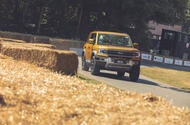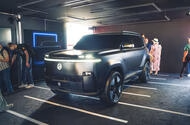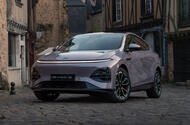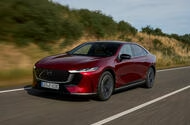California Motorcyclist Dragged by Car While Legally Lane Splitting
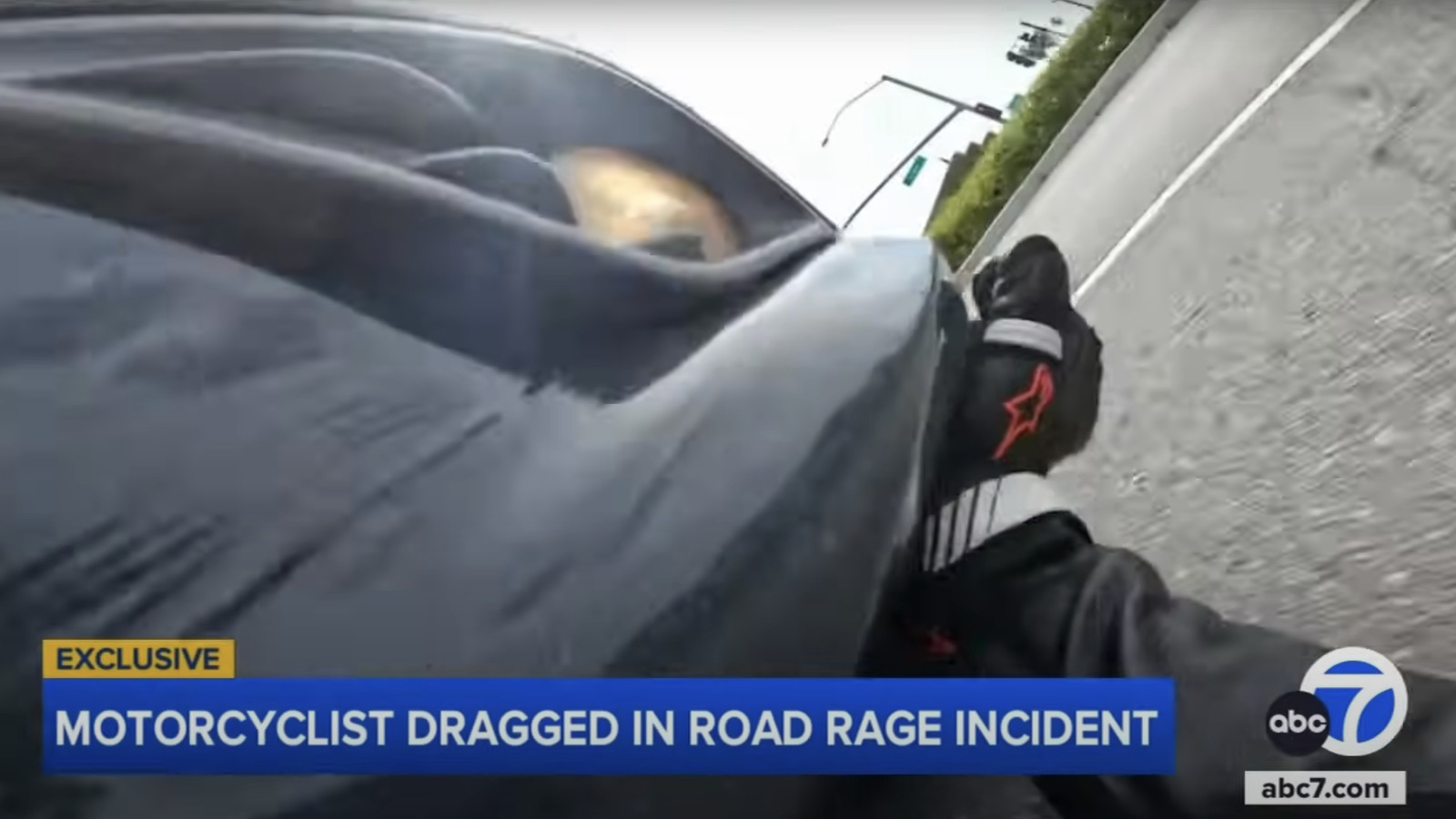
BYD Unveils Powerful Denza B5 Hybrid SUV to Challenge UK Off-Road Rivals
 Goodwood debut for BYD's new premium 4x4, which will be its second Denza model in the UK
Goodwood debut for BYD's new premium 4x4, which will be its second Denza model in the UK
BYD is going after the Land Rover Defender in the UK with the new B5 – a premium plug-in hybrid 4x4 with competitive off-road stats and supercar levels of power.
Launched in China last year as the Bao 5, the Defender 110 rival has made its UK debut at the Goodwood Festival of Speed ahead of a showroom launch early next year.
It is one of three models from BYD's new SUV sub-brand Fangchengbao, but will be badged Denza in the UK and positioned as a sibling to that premium brand's Z9 GT shooting brake - also headed to the UK.
Denza was founded in 2010 as a joint venture between BYD and Mercedes-Benz but is wholly owned by the Chinese firm.
The move to import the B5 confirms Autocar's previous report that BYD would launch its Fangchengbao cars here in a bid to diversify its powertrain offering and tap into new market segments.
The company's president, Stella Li, told Autocar at last year's Festival of Speed that she predicted the SUVs "will be very popular in the UK".
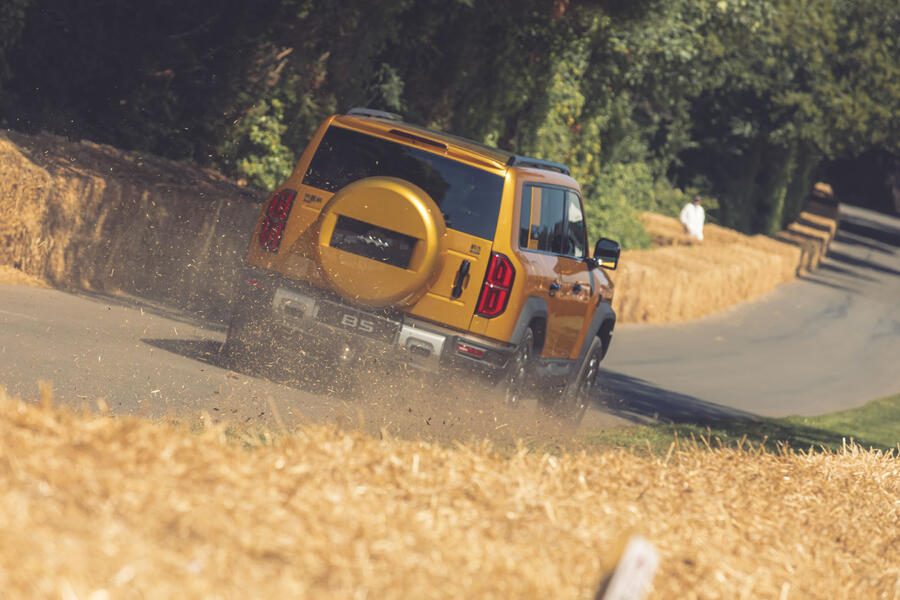
“In the UK, the roads are narrow but we love these big SUV off-road cars, so Fangchengbao will be here,” she said, referencing the popularity of large premium SUVs in this market, a sector in which BYD has until now been absent.
The company has not confirmed any specification details for the B5, but it is expected to be largely unchanged from the car in China, which uses a 'DMO Super-Hybrid Off-Road' ladder-frame platform and takes its power from a plug-in hybrid system centre around a 1.5-litre turbo engine with an electric motor on each axle.
The system pumps out up to 677bhp and 561lb ft - more than any Defender, including the new V8 Octa.
Meanwhile, a sizeable 31.8kWh battery (which serves as a structural element) supplies enough power for a claimed EV range of up to 78 miles on China's CLTC cycle - though that's likely to be nearer 50 miles in practice.
The B5 forms part of BYD's push to dramatically increase its hybrid car offering in the face of wavering EV uptake in Europe. The core BYD line-up is set to be boosted next year with the arrival of the Seal 06, a plug-in hybrid saloon/estate in the mould of the BMW 3 Series.
The Denza Z9 GT will also be available as a PHEV with a "colossal" combined range, or with pure-electric power.
Also starring on BYD's stand at Goodwood will be Denza's new D9 MPV, a "business-class" people carrier in the mould of the Lexus LM.
Cadillac Escalade IQ Sets New EV Range Record with 558 Miles on a Single...
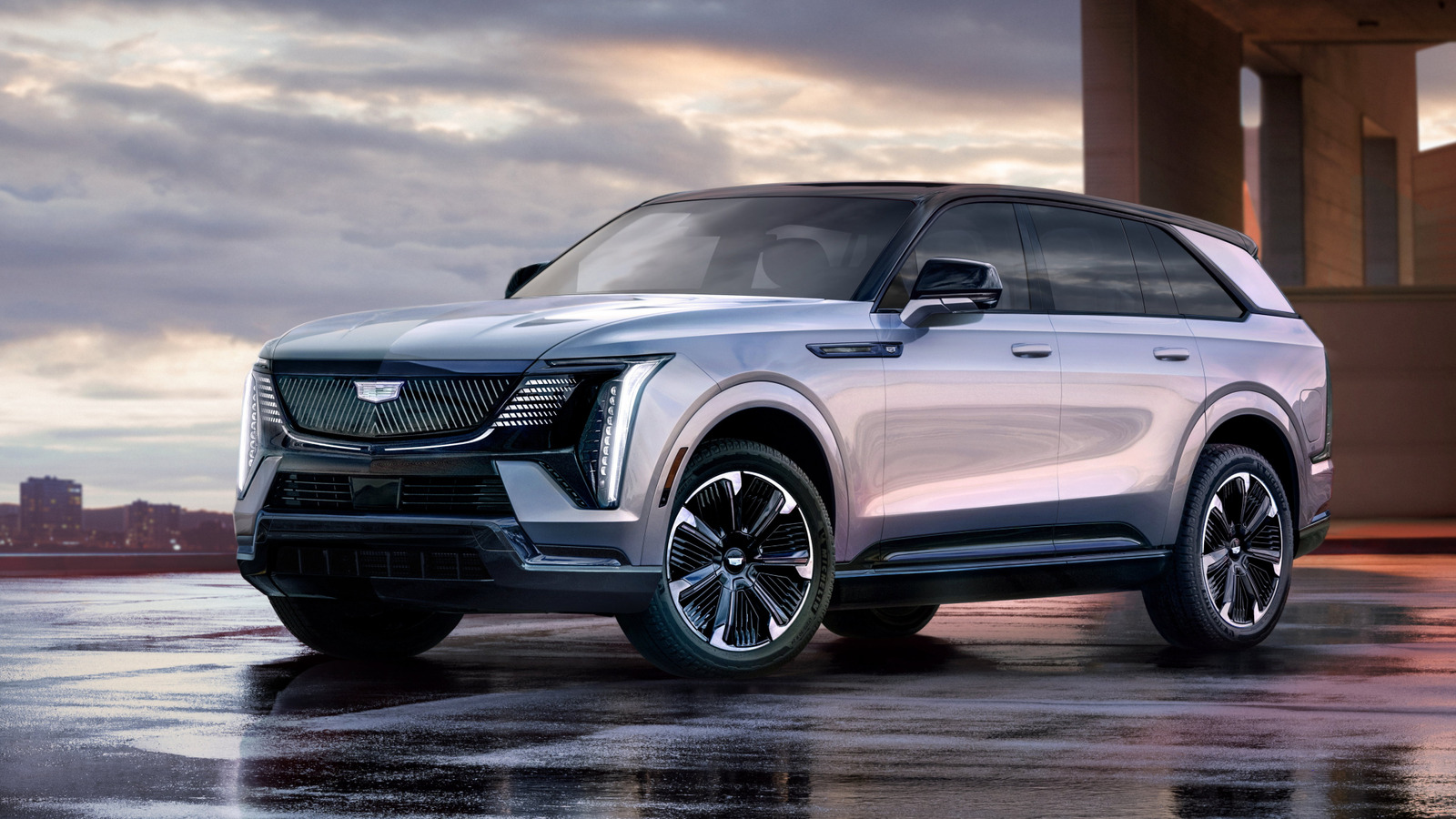
Hyundai Ioniq 6 N Unleashed Sharper Electric Performance Saloon Redefines Driving Thrills
 Super-saloon said to be sharper, keener, and “more sophisticated and predictable” than Ioniq 5 N sibling
Super-saloon said to be sharper, keener, and “more sophisticated and predictable” than Ioniq 5 N sibling
The Hyundai N division’s second electric performance car, the 641bhp Ioniq 6 N, will arrive this autumn as a sharper, keener and “more sophisticated and predictable” follow-up to the lauded Ioniq 5 N.
Speaking to Autocar, Hyundai N founder and vice president Joon Park said the new 6 N will take advantage of its lower saloon silhouette to be a different proposition from its smaller sibling, with which it shares a powertrain.
“We want a different type of driving experience between the two. The 5 N is a bit wilder. The 6 N is more precise,” he said.
The 6 N is based on the latest facelifted Ioniq 6 but has wider wheel arches to cover a 60mm increase in front and rear track widths. N’s chief designer, Eduardo Ramirez, said every new design element on the 6 N “serves a purpose”.
There’s a lower nose that “stresses the silhouette”, with a larger front mesh, N-specific winglets to channel air along the body side, and a large rear spoiler that “in combination with the front splitter balances the car’s aerodynamics,” Ramirez said.
The 6 N, shown for the first time at the Goodwood Festival of Speed, shares the same 641bhp and 568lb ft output and four-wheel-drive layout as the 5 N, owing to a 234bhp motor at the front and one making 406bhp at the rear. But “it’s an all-new car, I mean technically,” said Sven Risch, N’s head of chassis control and braking.
There are new motor magnets “to improve performance durability”, said Risch, as well as a 7kWh heater for the 84kWh (total) battery, to quickly bring it to optimum operating temperature.
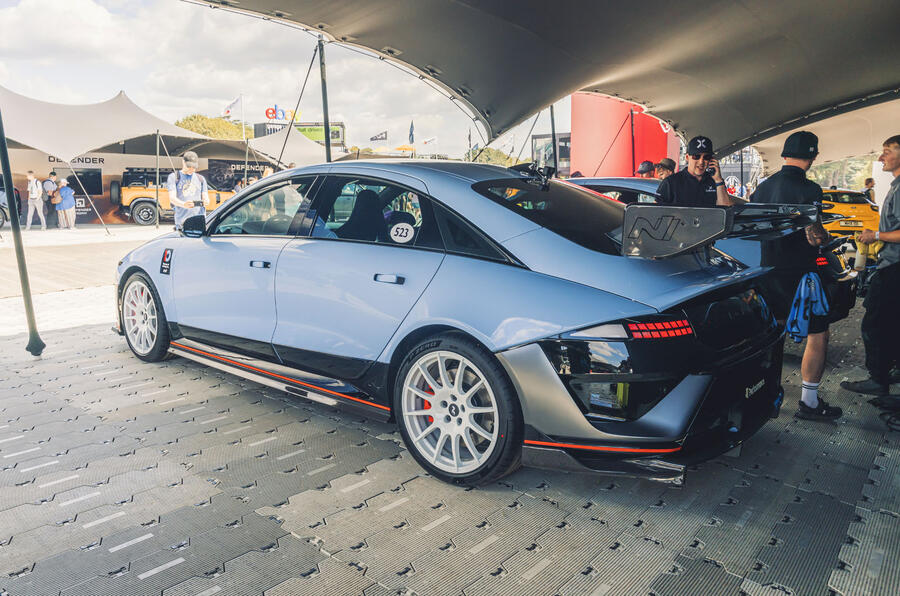
Significantly, the Ioniq 6 N has a lower centre of gravity than the 5 N. Combined with its increased track width, that helps to make the handling “much more reachable and controllable,” said Risch. “It’s much more sharp.”
In terms of hardware, there are electronically controlled dampers, an electronically controlled limited-slip rear differential and a new design of forged 20in alloy wheels with holed spokes to reduce weight, shod with 275/35 Pirelli P Zero tyres all round.
No kerb weight or 0-62mph time has been disclosed for the 6 N yet. At 4.94m long, it’s 220mm longer than a 5 N but, because it is lower, we’d anticipate a similar kerb weight to the 5’s 2235kg.
As with the 5 N, many of the 6 N’s driving characteristics will be defined by software and its tuning. There is torque vectoring via braking on both axles, an ‘N Grip Boost’ button to release the full 641bhp regardless of which of the plethora of drive modes the car’s set to, and a development of the 5 N’s artificial engine sound and gearshift points.
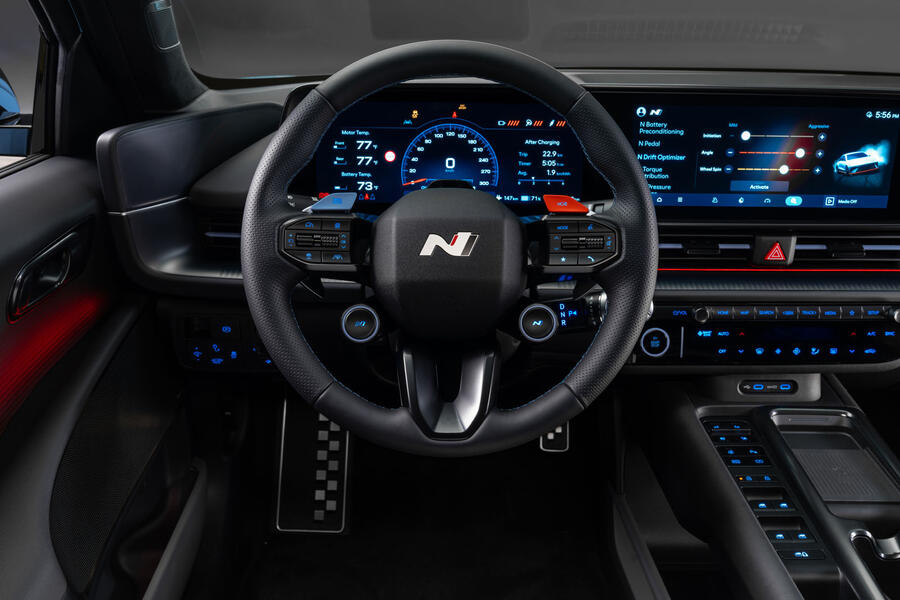
There are new drive or altered drive modes too, including an enhanced drift mode that has three-stage adjustment for ‘initiation’, 10-stage adjustment for ‘angle’ and 10-stage adjustment for ‘smoke’ (wheelspin) elements. A new ‘N track manager’ allows the driver to programme their own circuit and record its lap time.
Production of the Ioniq 6 N begins in September for the Korean market, with UK sales later in the year. There’s no word on pricing yet but Park said he would prefer it to be more affordable than the £65,010 Ioniq 5 N.
Mud Terrain vs All-Terrain Tires: Choosing the Right Option for Off-Road Adventures

MG Cyber X Concept Promises Bold New SUV Adventure for UK Roads by 2027
 Land Rover Defender-shaped concept is a follow-up to the Cyberster electric roadster
Land Rover Defender-shaped concept is a follow-up to the Cyberster electric roadster
A production version of the MG Cyber X concept could be on UK roads by 2027, UK boss David Allison has told Autocar.
The rugged, boxy SUV concept, which previews the second model in MG's fashion-focused Cyber line-up, was revealed earlier this year at the Shanghai motor show.
Asked by Autocar if we could see a production version here within the next two years, Allison said: “I think it's very possible. One of the things that has always impressed me very much about the way that this company operates is the speed of development."
He added: "It's not unusual that we will show something and very, very quickly it turns into a real thing."
The Cyber X is a bold, two-box, 4x4-inspired crossover measuring 4.3 metres long - making it roughly the same size as the Land Rover Defender 90 and slotting it in below the 4.5m-long MG S5 EV that recently arrived in the UK.
It has been revealed in concept form without an interior, but MG parent company SAIC’s design boss Jozef Kaban suggested to Autocar that the speed of development in China means it could quickly be made production-ready.
Allison said: "We are very much in favour of something like this coming to the UK."
He added that the UK "is MG's biggest market" and so his team is "quite fortunate" with the "real" influence they have over future products, such as how they should be positioned and kitted out.
This was because "if you can develop a car that would work in the UK, you can sell it pretty much everywhere".
Speaking at its unveiling, chief designer Kaban explained that the priority of the concept is to demonstrate how the more enthusiast-focused Cyber line-up could be expanded and to bring a new character to the MG family.
"One thing we have been talking about is the passion of MG and delivering experience, which is not just going from A to B but a pleasure which makes you happy," he said.
While the Cyber X previews a sibling to the Cyberster electric sports car and would likely share its fundamental underpinnings and technologies, it takes a radically different design approach - as part of Kaban’s plan to give the Cyber line-up as broad an appeal as possible.
"When you see the Cyberster, it's soft like a circle, with almost no edges, and with the other one coming, it's almost like plus and minus. They are completely different. But plus cannot live without minus. Their contrasts bring people together."
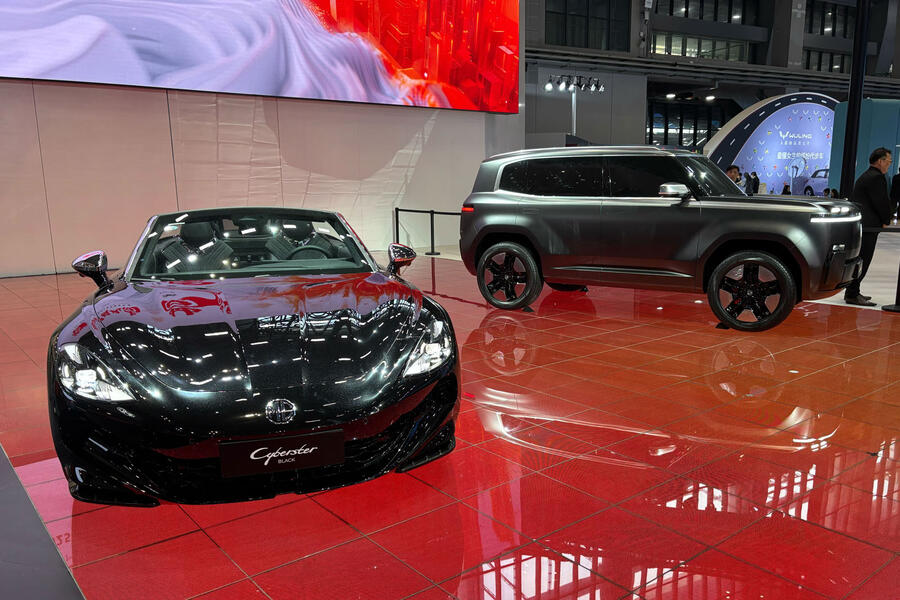
Kaban highlighted the octagonal outline of MG's emblem as a shape that could be interpreted as a "square circle or a round square" - a theme he says translates to the radically different design treatment for the sleek, flowing Cyberster and its brutalist new SUV sibling.
"The point is to show that we are so diverse, we are different, and MG is the brand which is able to handle two characters, because they will have one thing in common: the joy in connecting people and in being fun to have."
Kaban said that the priority with the Cyber X's design was to "give families an emotional car, to give them joy by not needing to compromise at the stage of life when they have a family".
The production version of the Cyber X will be MG's third distinct SUV model in Europe. It's only slightly smaller than the ZS and S5, but Kaban said its radically different design and positioning means it can co-exist with its high-riding rangemates.
"Of course we have the HS and ZS, and they are going to live, but we could give another star next to them to shine, to make the family even stronger."
Kaban said the Cyber X's monolithic silhouette is not a reflection of a desire to rethink traditional SUV designs but rather a recognition that "being a little bit edgy doesn't need to hurt".
He referenced the unusual pop-up headlights – "like a [Ferrari] Testarossa" – as a particular design highlight, saying that the advent of the 'digital world' means some historic car design differentiators have been lost and the Cyber X concept is designed to explore ways of bringing some of that character back.
Ina Garten’s Ultimate Summer Drive Playlist for Joyful Road Trips

Xpeng G6 Facelift Unveiled With Lightning-Fast Charging and Sleek New Design
 Early facelift for Xpeng's Model Y rival could make it the UK's fastest-charging electric car
Early facelift for Xpeng's Model Y rival could make it the UK's fastest-charging electric car
Xpeng has updated its Tesla Model Y rival, the G6 crossover, with a round of styling tweaks and new battery technology that the firm claims will make it the fastest-charging EV in its class.
The Chinese EV maker's mid-sized electric SUV was only revealed two years ago and has been on sale in the UK for just a few months, but it has already received a facelift to bring it up to date with its range-mates and rivals.
Chief among the updates is a huge hike in maximum charging speed, from 280kW to 451kW. That's quick enough, Xpeng says, to give a 10-80% charge in just 12 minutes - although public chargers in the UK currently top out at around 350kW.
Xpeng has not revealed how long the battery can sustain those peak charging speeds.
Full specifications remain to be confirmed, but the new G6 claims a maximum range of 326 miles from the biggest-battery variant, suggesting a decrease in outright capacity over the previous Long Range car, which claimed 354 miles between charges.
The changes under the floor come alongside a visual refresh, which brings a new full-width front light bar – following in the footsteps of its recently restyled Tesla rival – along with colour-coded wheel arches, a sleeker rear diffuser and a subtle rear spoiler.
Updates inside include new wood-grain dashboard trim and various material quality improvements, and there is now the option of a digital rear-view mirror on higher-spec cars.
Orders are now open in Europe for the updated G6 ahead of deliveries starting at the end of summer, but the firm's UK importer International Motors has yet to confirm when it will land here - although a public debut at the Goodwood Festival of Speed suggests it is not far away.
The G6's upgrades are matched by the firm's flagship G9 SUV – although charging for that model is boosted to an even higher peak speed of 530kW. Already on sale in Europe, the Audi Q6 E-tron rival is expected to launch in the UK in the coming months.
How Embracing Human Forgetfulness Can Prevent Tragic Hot Car Deaths

Mazda 6e Signals a Bold Electric Shift with Surprising Origins
 Mazda has finally produced an EV with usable range – but all is not as it seems The Mazda 6e feels like something of a forced hand for the Japanese manufacturer.Many of us would love for Mazda to merrily keep making MX-5s and a supporting cast of sensibly sized hatchbacks with zingy petrol engines and manual gearboxes, maybe with a couple of straight-six diesels thrown in. But the powers that be have decreed otherwise. Whether it wants to or not, it needs a credible EV, (the MX-30 has charm, but not much else)If you’re BMW, you can counter any legislative flip-flopping by betting on all the horses: petrol, diesel, hybrid, electric, and tick off hydrogen just in case. But Mazda just doesn’t have the engineering might to do all of it well. Whether it wants to or not, it needs a credible EV (the MX-30 crossover has charm but not much else), so for its new 6e, it has turned to its Chinese manufacturing partner Changan and Mazdafied its Deepal SL03.
Mazda has finally produced an EV with usable range – but all is not as it seems The Mazda 6e feels like something of a forced hand for the Japanese manufacturer.Many of us would love for Mazda to merrily keep making MX-5s and a supporting cast of sensibly sized hatchbacks with zingy petrol engines and manual gearboxes, maybe with a couple of straight-six diesels thrown in. But the powers that be have decreed otherwise. Whether it wants to or not, it needs a credible EV, (the MX-30 has charm, but not much else)If you’re BMW, you can counter any legislative flip-flopping by betting on all the horses: petrol, diesel, hybrid, electric, and tick off hydrogen just in case. But Mazda just doesn’t have the engineering might to do all of it well. Whether it wants to or not, it needs a credible EV (the MX-30 crossover has charm but not much else), so for its new 6e, it has turned to its Chinese manufacturing partner Changan and Mazdafied its Deepal SL03.

